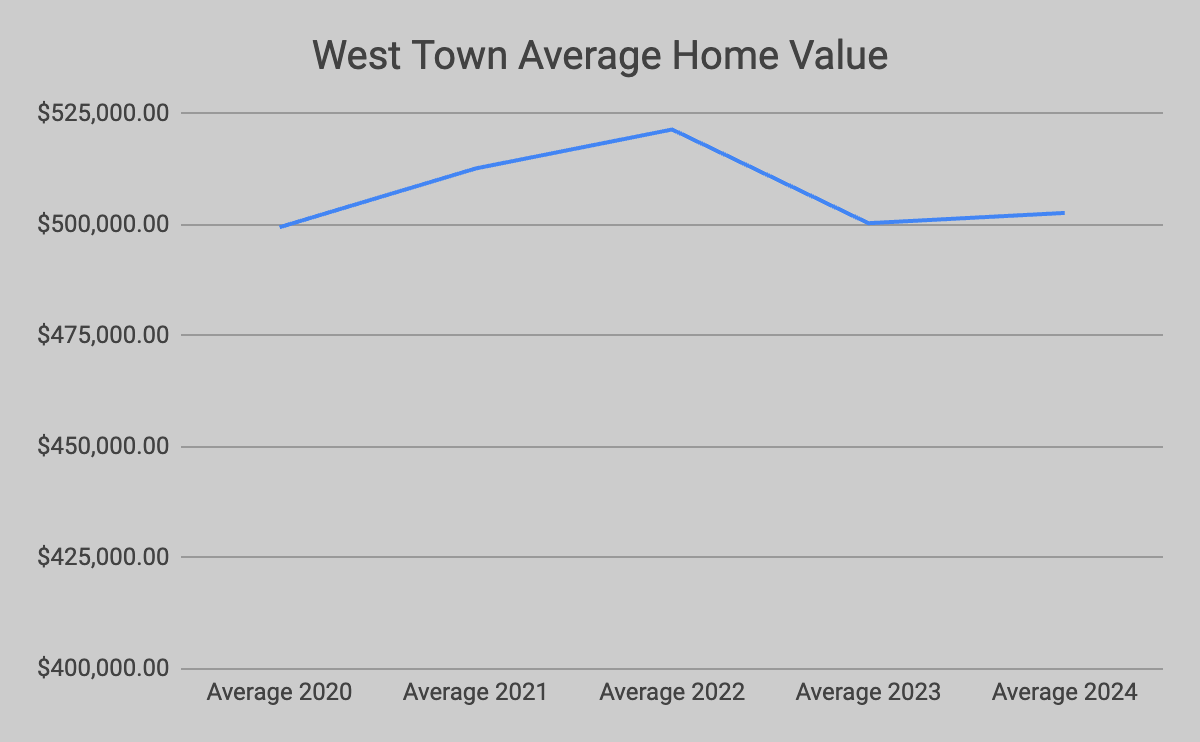West Town: Chicago’s Hub of Culture, Creativity, and Community
Feb 27, 2025
West Town by the Numbers



Introduction
West Town is one of Chicago’s most eclectic and rapidly evolving neighborhoods, blending rich history with modern charm. Located just west of downtown, it encompasses several distinct communities, including Wicker Park, Ukrainian Village, and Noble Square. With its historic architecture, thriving arts scene, and diverse culinary offerings, West Town is a vibrant destination for both locals and visitors alike.
Origins and Early History
West Town’s roots trace back to the early 19th century, when waves of immigrants, including Germans, Poles, and Ukrainians, settled in the area. These communities established businesses, churches, and cultural institutions that shaped the neighborhood’s identity. By the late 1800s, West Town had become a bustling working-class district, filled with brick cottages, worker’s flats, and thriving markets.
The arrival of the elevated train system in the early 20th century spurred further growth, connecting West Town to the rest of Chicago. However, like many urban neighborhoods, it faced challenges such as economic decline and depopulation during the mid-20th century. In recent decades, revitalization efforts have transformed West Town into one of Chicago’s most sought-after areas, while still preserving its cultural roots.
Transformation and Evolution
Over the years, West Town has evolved from an industrial and immigrant enclave into a trendy, artistic hub. Gentrification has brought new businesses, luxury housing, and an influx of young professionals, yet the neighborhood retains its historic charm. Streets once lined with warehouses and factories now feature vibrant murals, independent boutiques, and some of the city’s best dining spots.
As one of Chicago’s most walkable neighborhoods, West Town offers a perfect blend of old and new. Traditional Eastern European bakeries coexist with third-wave coffee shops, while historic churches stand next to modern art galleries. This balance between preservation and innovation is what makes West Town unique.
Historical Landmarks and Structures
West Town boasts a mix of historic landmarks and contemporary attractions, reflecting its dynamic history and evolving character:
- Holy Trinity Orthodox Cathedral – A stunning example of Russian Orthodox architecture, designed by famed architect Louis Sullivan.
- St. Nicholas Ukrainian Catholic Cathedral – A key cultural and religious institution for Chicago’s Ukrainian community.
- The Robey Hotel – Originally built in 1929 as an office building, this Art Deco landmark now serves as a boutique hotel with stunning city views.
- Flat Iron Arts Building – A creative hub for artists, featuring studios, galleries, and unique performances.
Historical Figures
West Town has been shaped by a variety of influential figures, including:
- Louis Sullivan – The legendary architect behind the design of Holy Trinity Orthodox Cathedral.
- Nelson Algren – The celebrated author, best known for his novel "The Man with the Golden Arm," lived in West Town and wrote extensively about its working-class residents.
- Pavlo Matlashewski – A leader in the Ukrainian-American community who helped establish many cultural institutions in the neighborhood.
Historical Events
Several key moments have defined West Town’s history:
- The Immigration Boom (Late 19th - Early 20th Century) – Waves of Eastern European immigrants settled in West Town, bringing their cultural traditions, languages, and cuisine.
- Urban Renewal and Gentrification (1990s - Present) – While revitalization efforts have led to economic growth, they have also sparked debates about displacement and affordability.
- The Rise of the Arts Scene (2000s - Present) – The neighborhood has become a hub for Chicago’s creative community, with music venues, art galleries, and street murals redefining the area.
Current Trends and Redevelopment
Today, West Town is a thriving neighborhood known for its mix of cultures, independent businesses, and community-driven initiatives. Key trends shaping the area include:
- Booming Food Scene – West Town is home to some of Chicago’s best restaurants, including Michelin-starred spots and beloved neighborhood eateries.
- Expanding Creative Spaces – Artists and entrepreneurs continue to fuel the local economy, with co-working spaces, maker studios, and performance venues popping up throughout the neighborhood.
- Sustainable Development – As more people move to West Town, there’s a focus on green spaces, bike-friendly streets, and eco-conscious building practices.
Conclusion
West Town embodies the spirit of Chicago—diverse, creative, and always evolving. From its immigrant roots to its rise as a cultural hotspot, the neighborhood remains one of the city’s most exciting places to explore. Whether you’re savoring authentic Ukrainian pierogi, discovering local art, or simply enjoying the neighborhood’s historic streets, West Town offers something for everyone.
Share this newsletter with your friends, so they too can stay updated on Chicago’s evolving neighborhoods and hidden gems.
Stay connected with news and updates!
Join our mailing list to receive the latest news and updates from our team.
Don't worry, your information will not be shared.
We hate SPAM. We will never sell your information, for any reason.

